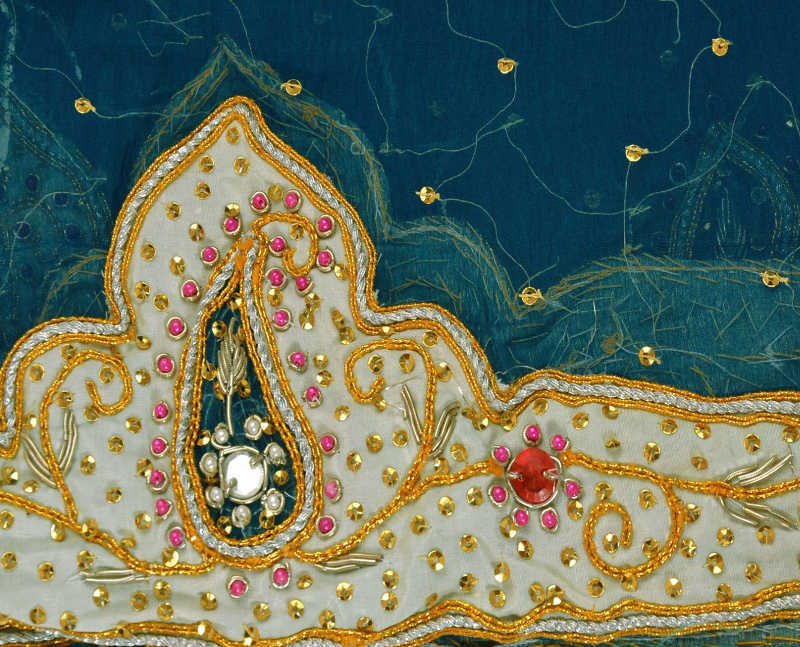===
0853,
2
===

=== |
 |
nairang : 'Fascination, bewitching arts, wiles; magic, sorcery; deception; —deceit; trick; pretence; evasion; —freak; —a wonderful performance, a miracle; anything new or strange'. (Platts p.1166)
rang : 'Colour, colouring matter, pigment, paint, dye; colour, tint, hue, complexion; beauty, bloom; expression, countenance, appearance, aspect; fashion, style; character, nature; mood, mode, manner, method; kind, sort; state, condition'. (Platts p.601)
āb : 'Water; water or lustre (in gems); temper (of steel, &c.); edge or sharpness (of a sword, &c.); sparkle, lustre; splendour; elegance; dignity, honour, character, reputation'. (Platts p.1)
FWP:
SETS
MOTIFS == [BELOVED IS GOD]; ISLAMIC
NAMES
TERMSReally, the word- and meaning-play with be-rang , nairang, rang -- in a fourteen-word verse, how much better could it get?
And since rang can also refer to all sorts of 'styles' and 'aspects' less literal than 'color', we have cause to remember that āb too means not just 'water' but also 'luster, glitter, elegance', etc. (see the definitions above). It might seem that even for 'color' itself, the sense of 'luster' could work; but since colors sometimes are pale and have no luster, the claim of being within 'every color' couldn't work.
SRF brings out the Sufistic reading, and it's certainly the primary one. But the meanings of nairang that have to do with 'trickery, deceit, sorcery, pretence' also work perfectly in the context of the verse. 'Just look at how the magician plays such tricks, how he vanishes, how he reappears somewhere else!' We know he does it to entertain us, but in this beguilement might there not be sinister possibilities as well?